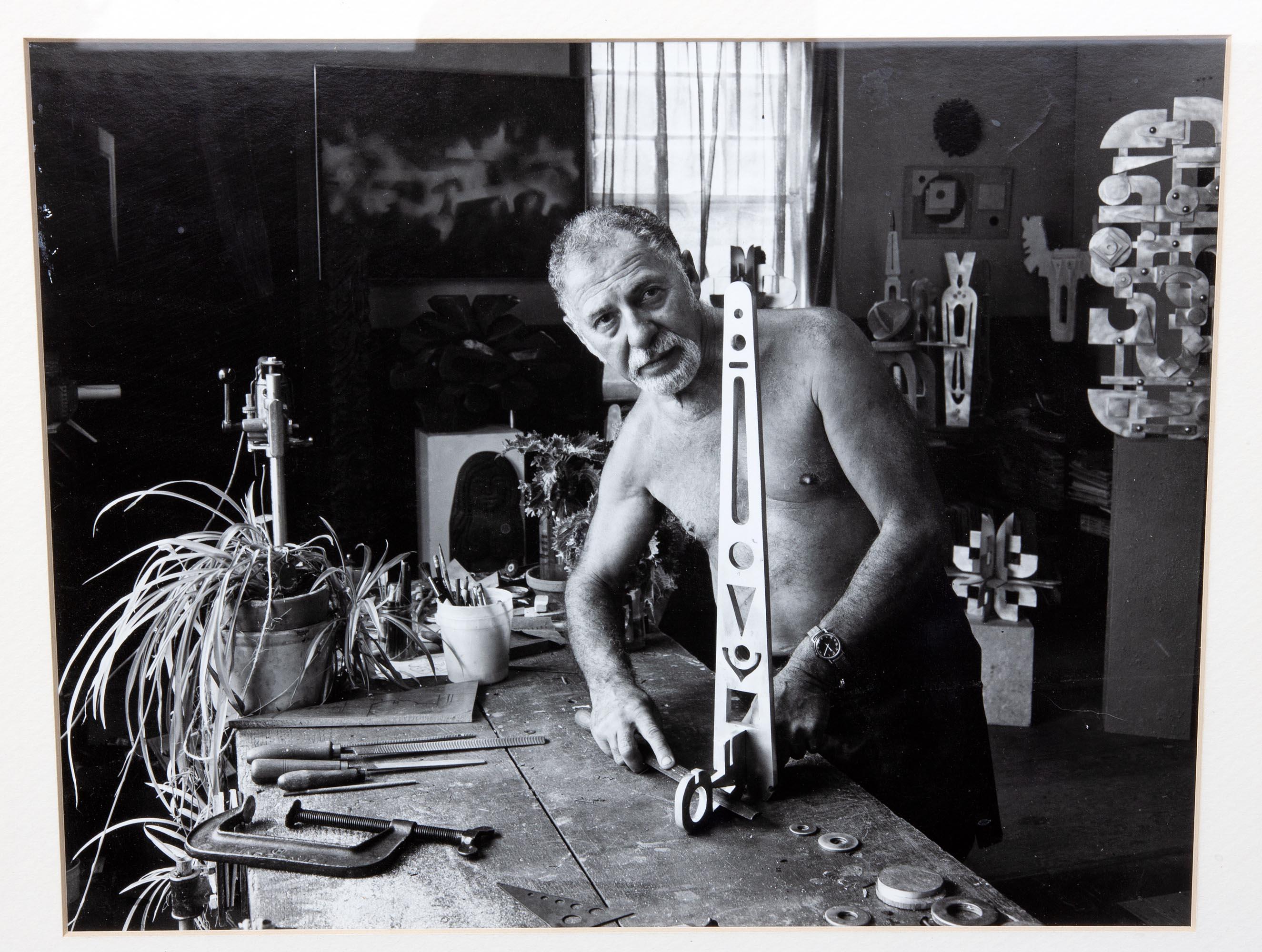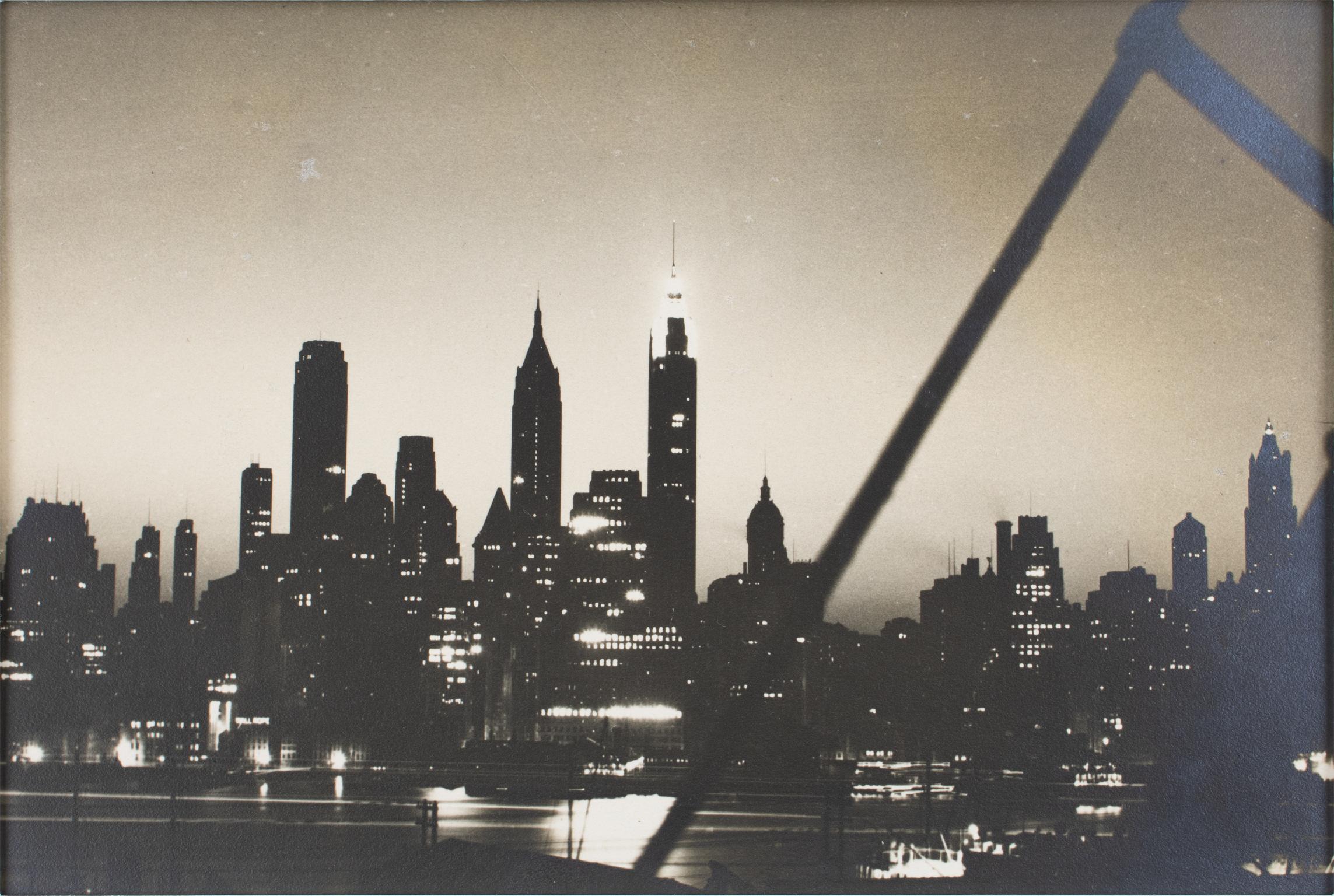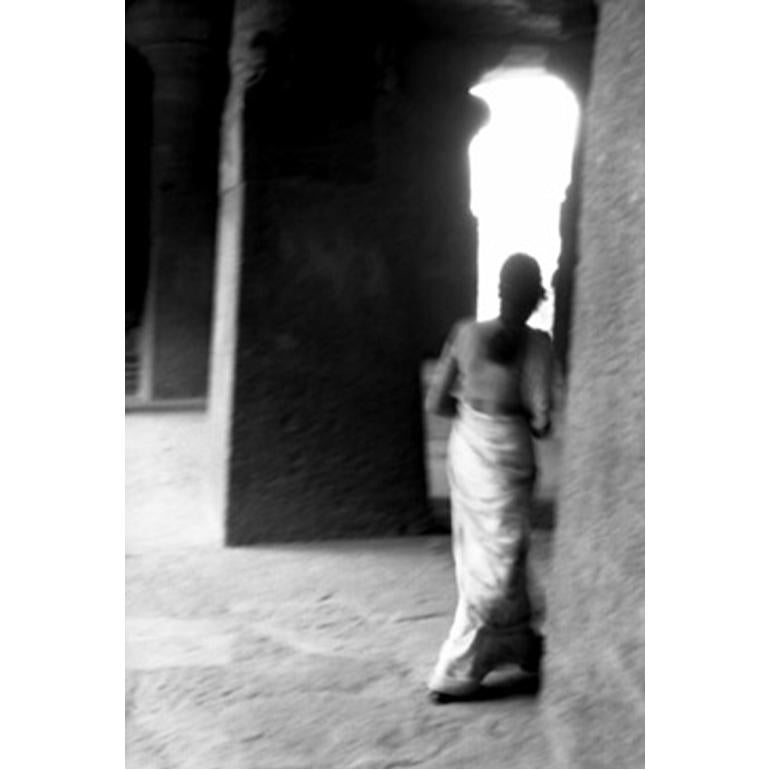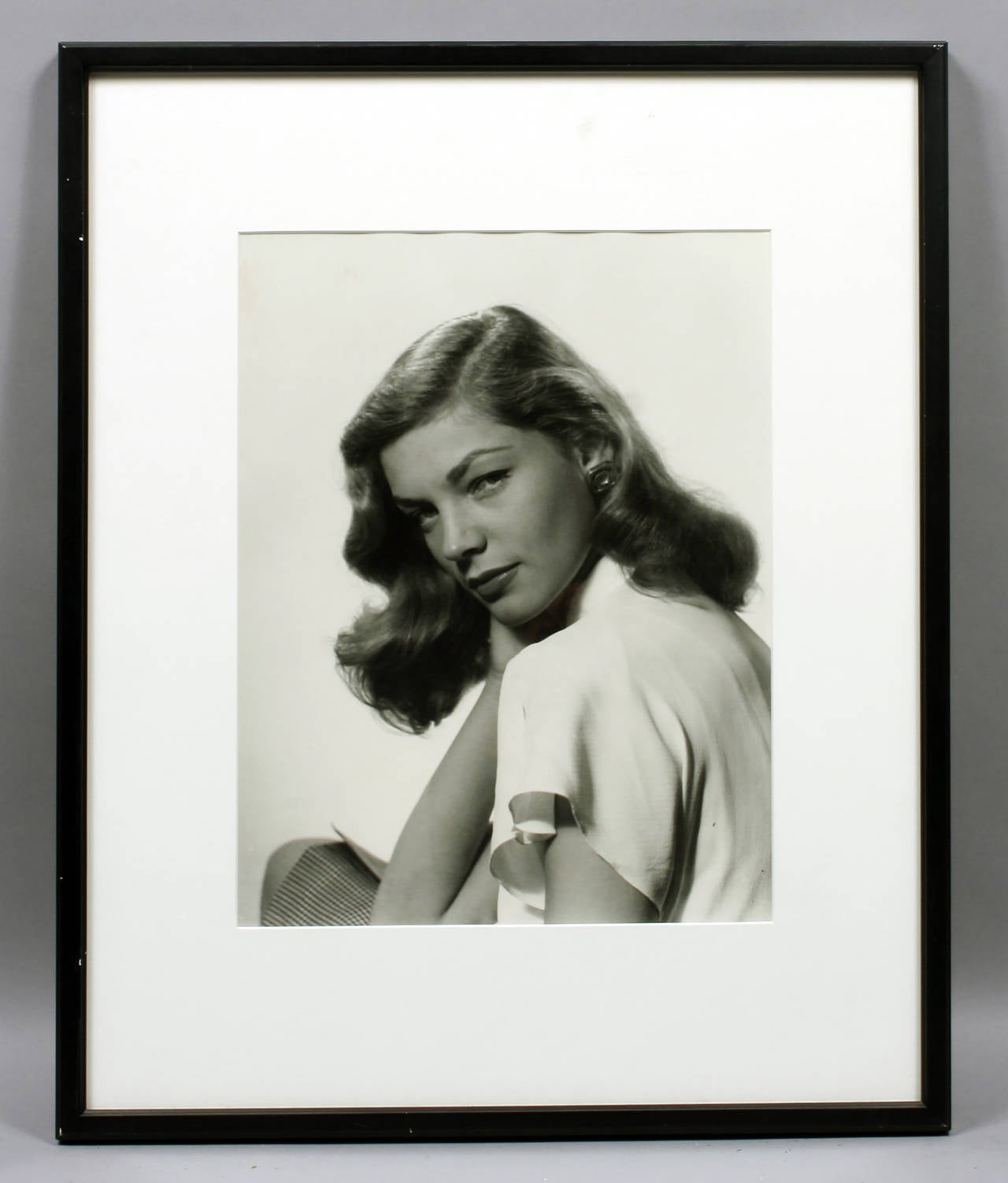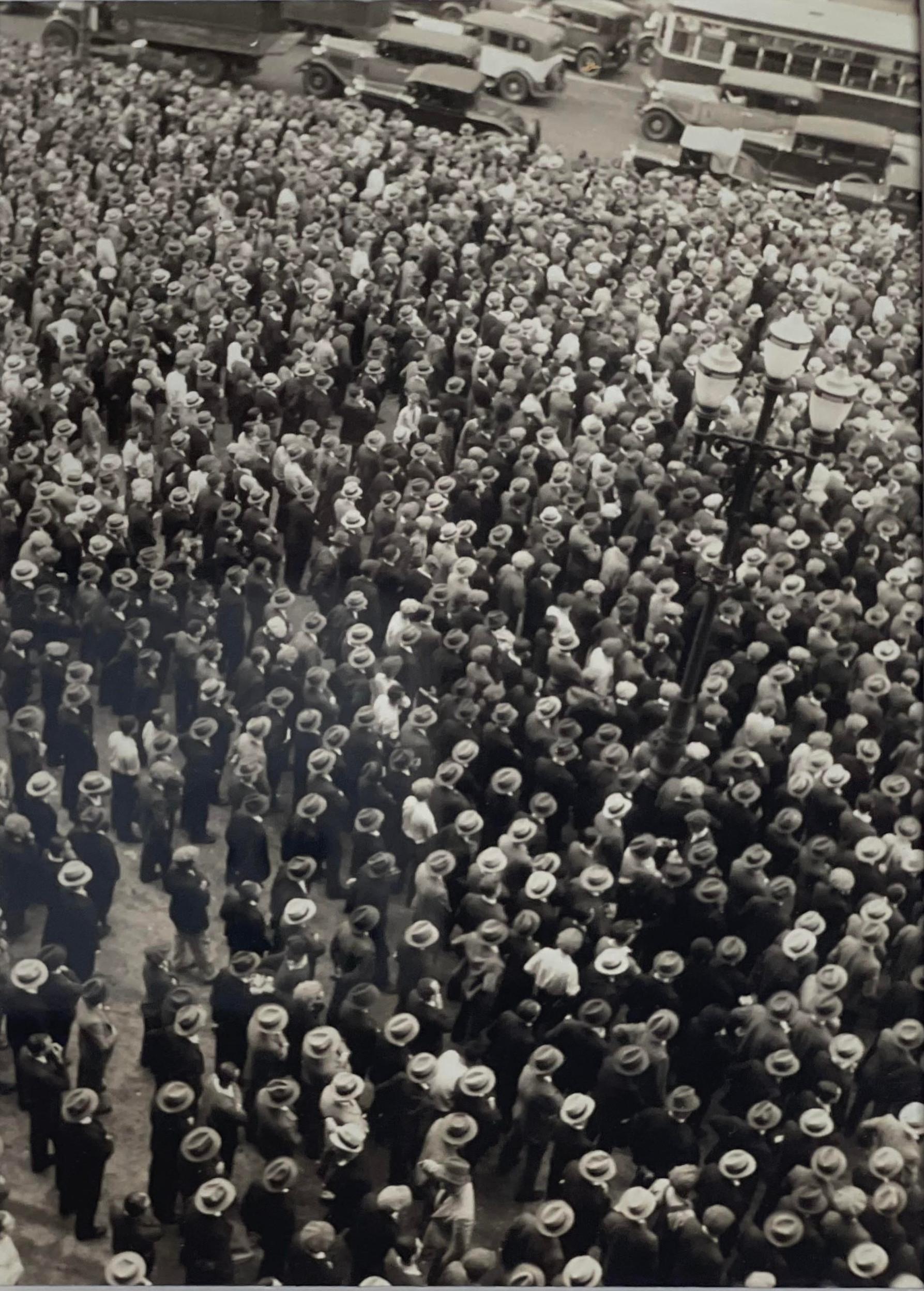Items Similar to USS Roosevelt, New York Navy Day 1945, Silver Gelatin B and W Photography Framed
Want more images or videos?
Request additional images or videos from the seller
1 of 11
Associated PressUSS Roosevelt, New York Navy Day 1945, Silver Gelatin B and W Photography Framed1945
1945
About the Item
An original silver gelatin black and white photograph by Associated Press Photo. The USS Roosevelt aircraft carriers on the Hudson River, New York, during Navy Day in 1945.
Features:
Original Silver Gelatin Print Photography framed.
Press Photography.
Press Agency: Associated Press Photo.
Photographer: Unknown.
Title: New York Celebrates Navy Day: Truman commissions new aircraft carriers.
Provenance: Private collection.
Frame Size: 20.63 in high (52.5 cm) x 16.75 in wide (42.5 cm) x 1.38 in deep (3.5 cm).
Image Size: 5.91 in high (15.3 cm) x 7.87 in wide (20.7 cm).
View size: 5.51 in high (14.3 cm) x 7.48 in wide (19.9 cm).
Ink Stamp at the back: "New York celebrates Navy Day: Truman commissions new aircraft carrier. The flight deck of the 45,000-ton aircraft carrier Franklin D. Roosevelt is packed with service and civilian spectators as President Truman commissioned the giant ship at the Brooklyn Navy Yard on October 27 during New York City's Navy Day ceremonies. Associated Press Photo - NAP 283175". Hand-written French translation reads Porte-Avion "Franklin Roosevelt," 40.000 tonnes. Son pont supérieur est occupé par les militaires et les civiles qui prennent part a la cérémonie du baptéme du navire par le President Truman."
Note:
In the United States, the Navy League of the United States organized the first Navy Day in 1922, holding it on October 27 because it was the birthday of 26th President Theodore Roosevelt (1858–1919, served 1901–1909), who was a naval enthusiast/promoter of sea power and former Assistant Secretary of the Navy just before the Spanish–American War of 1898. Although meeting with mixed reviews the first year, in 1923, over 50 major cities participated, and the United States Navy sent several of its ships to various port cities for the occasion. The 1945 Navy Day was a large celebration, with 33rd President Harry S. Truman (1884–1972, served 1945–1953) reviewing the returning home American fleet in New York Harbor after victory in World War II.
In 1949, Louis A. Johnson (1891–1966, served 1949–1950,) second Secretary of the newly merged and created Department of Defense, directed that the U.S. Navy's participation occur on newly established Armed Forces Day for the unified/coordinated uniformed services in May. Although as a private civilian organization, the Navy League was not affected by this directive and continued to organize separate Navy Day celebrations as before. In the 1970s, historical research found that the "birthday" of the earlier Continental Navy during the American Revolutionary War (1775–1783) was determined to be October 13, 1775, and Chief of Naval Operations Admiral Elmo R. Zumwalt worked with the Navy League to define October 13 as the new date of Navy Day. However, Navy Day in the United States is still widely recognized as the 27 of October.
(Credit: Wikipedia)
Note:
USS Franklin D. Roosevelt (CVB/CVA/CV-42) was the second of three Midway-class aircraft carriers. To her crew, she was known as "Swanky Franky," "Foo-De-Roo," or "Rosie," with the last nickname probably the most popular. Roosevelt spent most of her active deployed career operating in the Mediterranean Sea as part of the United States Sixth Fleet. The ship was decommissioned in 1977 and scrapped shortly afterward. She was the first aircraft carrier of the United States Navy to be named in honor of a President of the United States.
The USS Roosevelt was commissioned on Navy Day, October 27, 1945, at the New York Naval Shipyard. On July 21, 1946, Roosevelt became the first American carrier to operate an all-jet aircraft under controlled conditions. From September 1948 to January 1949, Roosevelt undertook a second tour of duty with the U.S. Naval Forces, Mediterranean. In 1950, Roosevelt became the first carrier to take nuclear weapons to sea. In September and October 1952, she participated in Operation Mainbrace, the first major NATO exercise in the North Atlantic.
(Credit: Wikipedia)
- Creator:
- Creation Year:1945
- Dimensions:Height: 20.67 in (52.5 cm)Width: 16.74 in (42.5 cm)Depth: 1.38 in (3.5 cm)
- Medium:
- Movement & Style:
- Period:
- Condition:Vintage wear, age-toning, light fold on the industrial building, upper left corner, and in the marines crowd, lower left corner. The frame is in good condition.
- Gallery Location:Atlanta, GA
- Reference Number:
About the Seller
5.0
Vetted Seller
These experienced sellers undergo a comprehensive evaluation by our team of in-house experts.
1stDibs seller since 2019
67 sales on 1stDibs
Typical response time: 1 hour
- ShippingRetrieving quote...Ships From: Atlanta, GA
- Return PolicyThis item cannot be returned.
More From This SellerView All
- New York City by Night, circa 1950, Silver Gelatin B and W Photography FramedLocated in Atlanta, GAAn original silver gelatin black and white photograph with framing. New York City by night, circa 1950. Features: Original Silver Gelatin Print Photography framed. Press Photography....Category
1950s Modern Black and White Photography
MaterialsSilver Gelatin
- New York City Skyscrapers, July 1931, Silver Gelatin B and W Photography FramedBy Press Agency Keystone View CompanyLocated in Atlanta, GAAn original silver gelatin black and white photograph by Press Agency Keystone View Company. New York City skyscrapers, July 7th, 1931. Features: Original Silver Gelatin Print Photog...Category
1930s Modern Black and White Photography
MaterialsSilver Gelatin
- Policemen in Paris circa 1930 - Silver Gelatin Black and White PhotographyBy Wide World PhotosLocated in Atlanta, GAAn original silver gelatin black and white photograph by Wide World Photos - New York Times, Paris. Policemen in Paris circa 1930. Features: Original Silver Gelatin Print Photography...Category
1930s Art Deco Black and White Photography
MaterialsSilver Gelatin
- Boulevard Montmartre, Paris, Busy Street View, Silver Gelatin B & W PhotographyBy Wide World PhotosLocated in Atlanta, GAAn original silver gelatin black and white photograph by Wide World Photos, Paris. A street view of Boulevard Montmartre in Paris, circa 1930. Features: Original Silver Gelatin Print Photograph Unframed. Press Photograph. Press Agency: Wide World Photos - The New York Times S.A. in Paris. Photographer: Anonymous. Title: busy street view of Boulevard Montmartre in Paris, circa 1930. Provenance: Private collection. Image Size: 6.54 in. high (16.6 cm) x 6.65 in. wide (11.8 cm) - Archivally matted in a 17 x 13 mat. The ink stamp at the back read: "Wide World Photos - The New York Times S.A. - 106 rue Réaumur, 100 - Paris - Tel: GUT 65-46 or 65-47 - Adr. Télég: TIMWIT-PARIS". A caption was probably glued to the back but has been removed. We will ship this piece in a mat (17 x 13 in.) that fits a standard-sized frame. About: Le Petit Casino, at 12 Boulevard Montmartre, is a show restaurant built in 1893 on the former site of the Oriental Bazaar and the Séraphin Theater. It closed its doors in 1948. On the left side of the photograph, you can see the front of La Maxeville brasserie-restaurant. La Grande Maxéville was founded in 1901. The architect Joachim Richard (1869-1960) designed the new Grande Maxéville. His son-in-law, Georges Roehrich, designed an establishment in a pure "Art Deco" style. Imagine the rooms covered with engraved mirrors, one story high - including the ceiling and we'll get a little idea of what this superb restaurant was like. Elves were dancing in swarms, on the blinds, on the walls, and on the ceiling. They symbolized the Parisian party and the joy of living and brought an undeniable touch of fantasy to this place. The "Grands Boulevards" at that time were still flourishing. Luxury shops were spreading out there. A nighttime activity allowed the restaurants to fill up very often. The theaters, including that of the variety show located on the opposite sidewalk, attracted a share of the clientele. During the day, people would come and sip a drink while listening to the orchestra. Many famous artists performed as "guest stars" at La Maxéville. The Grands Boulevards and mainly the Boulevard Montmartre have always been one of the centers of Paris, which exert the most attraction with tourists, Provincials, and Parisians. It is indeed the central artery of the capital. Many varied shops, cafes, restaurants, and shows throng the famous Boulevard. As soon as night falls, one by one, the signs light up, the facades light...Category
1930s Art Deco Black and White Photography
MaterialsSilver Gelatin
- Sled Race in Central Park, 1934 Silver Gelatin Black-White Photography FramedLocated in Atlanta, GAAn original silver gelatin black and white photograph by Press Agency New York Times office in Paris (Wide World Photos.) Sled race in Central Park, New York, 1934. Features: Original silver gelatin print photography framed. Press Agency New York Times Office in Paris - Wide Wolrd Photos. Photographer: unknown. Title: Sled Race in Central Park, 1934. Provenance: Private collection. Frame Size: 20.63 in high (52.5 cm) x 16.75 in wide (42.5 cm) x 1.57 in deep (4 cm). Image Size: 5.51 in high (14.2 cm) x 7.48 in wide (19.8 cm). French typed legend, copyright credit, and ink stamp at the back that read: "Course de traineaux dans un parc a New York. Sur la neige qui recouvre les allées du Central Park Casino a new York, un groupe d'artistes a eu l'idée d'organiser une course de traineaux - voici une vue de la course - Photos NYT - NY 5/1/34 - SP." (Sled race in a New York park. On the snow covering the paths of the Central Park Casino in New York, a group of artists had the idea of organizing a sled race - here is a view of the race - Photos NYT - NY 5/ 1 /34 - SP.) Note: The Central Park Casino, originally the Ladies' Refreshment Salon, was a restaurant in Central Park, near East 72nd Street in Manhattan, New York City. The name of the building came from the Italian for "little house," but the Casino itself was never a gambling business. Originally, Calvert Vaux designed the building in 1862 as part of the Greensward Plan for Central Park. The original plan was a wooden chalet-style structure with a broad hip roof. Before construction began, however, Vaux decided that a more permanent building was needed. The following year, with the assistance of Edward C. Miller and Jacob Wrey Mould, the Casino was redesigned as a Gothic Revival stone structure. The building opened in early 1864 as a restaurant planned for unaccompanied female visitors to Central Park and was one of Central Park's three original restaurants. Soon, it was patronized by both men and women. The building that housed the Casino belonged to the City of New York, and the City often leased the Casino to independent operators. In the early 1920s, the Casino was rundown and renovated during the winter of 1921–1922. Jimmy Walker, mayor of New York City during the late 1920s, frequented the Casino and reportedly spent more time there than in New York City Hall. Besides entertaining elite guests in the restaurant, Walker had an office in the Casino and conducted city administration there while meeting with political cronies. In 1929, Walker terminated the lease of C.F. Zittel and allowed a friend, Sidney Solomon, to transform the Casino into one of New York's most expensive nightclubs. In February 1929, they released the new project. Solomon changed the Casino's interior using a design from Viennese designer Joseph Urban, though he kept the exterior mostly the same. The renovated Casino reopened on June 4, 1929. When the Great Depression hit four months after the Casino reopened, the nightclub faced increasing criticism for operating on city land while maintaining prices only the wealthiest New York residents could afford. In 1930, as part of the enforcement of Prohibition, the United States government raided the Casino and seized alcoholic beverages. Walker's successor, Fiorello H. La Guardia, and his parks commissioner Robert Moses, who held a vendetta against Walker, wanted to tear down the Casino to build a playground on the site. In 1934, Moses served an eviction order on the Casino's management. When the Parks Association of New York City objected...Category
1950s Modern Black and White Photography
MaterialsSilver Gelatin
- Hudson River, New York Navy Day 1945, Silver Gelatin B and W Photography FramedBy Associated PressLocated in Atlanta, GAAn original silver gelatin black and white photograph by Associated Press Photo. The Hudson River in New York during Navy Day in October 1945. Features: Original Silver Gelatin Print...Category
1940s Modern Black and White Photography
MaterialsSilver Gelatin
You May Also Like
- Vintage Photograph of a Modern SculptorLocated in Rochester, NYVintage photograph of an unknown abstract sculptor. In metal frame.Category
Mid-20th Century Modern Black and White Photography
MaterialsSilver Gelatin
- Enter the Temple, Elephant Island, Bombay, India, 1988By Victoria GoldmanLocated in Hudson, NYEach year, Robin Rice celebrates a Salon style exhibition to showcase her gallery artists and invite new ones. With Robin’s extensive experience as a gallery curator, all Robin Rice...Category
1990s Modern Figurative Photography
MaterialsSilver Gelatin
- Phillipe Halsman Portrait Photography Lauren Bacall Black and White Framed 1944By Philippe HalsmanLocated in Buffalo, NYThe work offered for sale here is an original vintage silver gelatin print hand created by Halsman in 1944 and exhibited at the International Center for Photography. Philippe Halsman was at one point considered the best photo-portraitist in France. He had an incessant interest in faces: “Every face I see seems to hide—and sometimes fleetingly reveal—the mystery of another human being.” Halsman’s photographs of politicians, celebrities, and intellectuals were featured widely in magazines like LIFE and Vogue. His more famous subjects included the likes of Marc Chagall, Le Corbusier, Audrey Hepburn, and Albert Einstein. He also had a 37-year collaboration with Salvador Dalí, which resulted in several famous surrealist series including the “Dalí’s Mustache” portraits...Category
1940s Modern Figurative Photography
MaterialsPhotographic Paper, Silver Gelatin, Wood
- Crowd SceneBy Edward W. QuigleyLocated in New York, NYEdward Quigley Crowd Scene, 1931 Vintage gelatin silver print Artist's stamp on the back of the photograph Frame Included Frame bears labels from: Joel Soroka Gallery, Co Ota House, CA Measurements: Frame: 13 x 11.25 x 0.5 inch Photograph: 4.5 x 3.5 inches About Edward Quigley: Edward Quigley was a leading American modernist who became known in the 1930s for his experimental photographic work with light. Quigley acquired his first camera at age twelve, joined the Photographic Society of Philadelphia in1929, and opened his own studio a year later. He supported himself with innovative advertising and editorial work published regularly in magazines such as U.S. Camera and Photographie, while winning prizes in numerous salons for his experimental light abstractions, captured with the aid of prisms and lenses to startling affect. Today, photographs by Edward Quigley are housed in the permanent collections of The San Francisco Museum of Modern Art, The Museum of Fine Arts, Boston, The Cleveland Museum of Art, and the Philadelphia Museum of Art. Biography Courtesy Robert Koch GalleryCategory
1930s Modern Black and White Photography
MaterialsSilver Gelatin
- Stirling Moss and Denis Jenkinson, Mercedes 300 SLR Mille Miglia, ItalyBy Jesse AlexanderLocated in Dallas, TXSigned in black ink on print margin by Jesse Alexander Paper size: 16 x 20 in., Image size: 11 1/2 x 17 in. "The Mercedes W196 of Stirling Moss practices in the rain on one of the fastest road racing circuits in Europe. Moss teamed with the Argentine champion, Juan Manuel Fangio, as the two drivers spearheaded the Mercedes effort in 1995, dominating the season. This is the open-wheeled version of the W196, a car that Mercedes uses today at historic events around the world to promote its racing heritage." -Caption from "Driven: The Racing Photography...Category
20th Century Modern Black and White Photography
MaterialsSilver Gelatin
- Phil Hill, Ferrari. 1561F2, Nurburgring, GermanyBy Jesse AlexanderLocated in Dallas, TXNo Edition Signed in black ink on print margin by Jesse Alexander Gelatin silver print Paper size: 14 x 11 in. Image size: 9 1/2 x 9 1/2 in. "Soon-to-be World Champion Phil Hill is in his first Grand Prix drive for Ferrari. The car is a single seater Formula Two machine, and he is seen rushing downhill through the infamous "Fuchsröhre" section of the Ring. The image is unusual for several reasons: it was taken with a Rolleiflex camera...Category
1950s Modern Black and White Photography
MaterialsSilver Gelatin
Recently Viewed
View AllMore Ways To Browse
Defense De
Secretary 1950
Vintage Sea Photo
Vintage Sea Photos
Alexander Pope Bench
Battle Of Little Big Horn
Elliott Erwitt On Sale
Emma Stern
Enver Hoxha
Gabe Leonard
Henri Cartier Bresson Matisse
Henry Horenstein Dolly Parton 1972
Hermes Nye
Hockey Stick Frame
Ines De La Fressange Photo
James Bond Drinking Martini
Linkin Park
Lola Alvarez Bravo
